Concave Lenses - Definition, Examples, Quiz, FAQ, Trivia
Discover how light bends and images form with special curved lenses!
What is a Concave Lens?
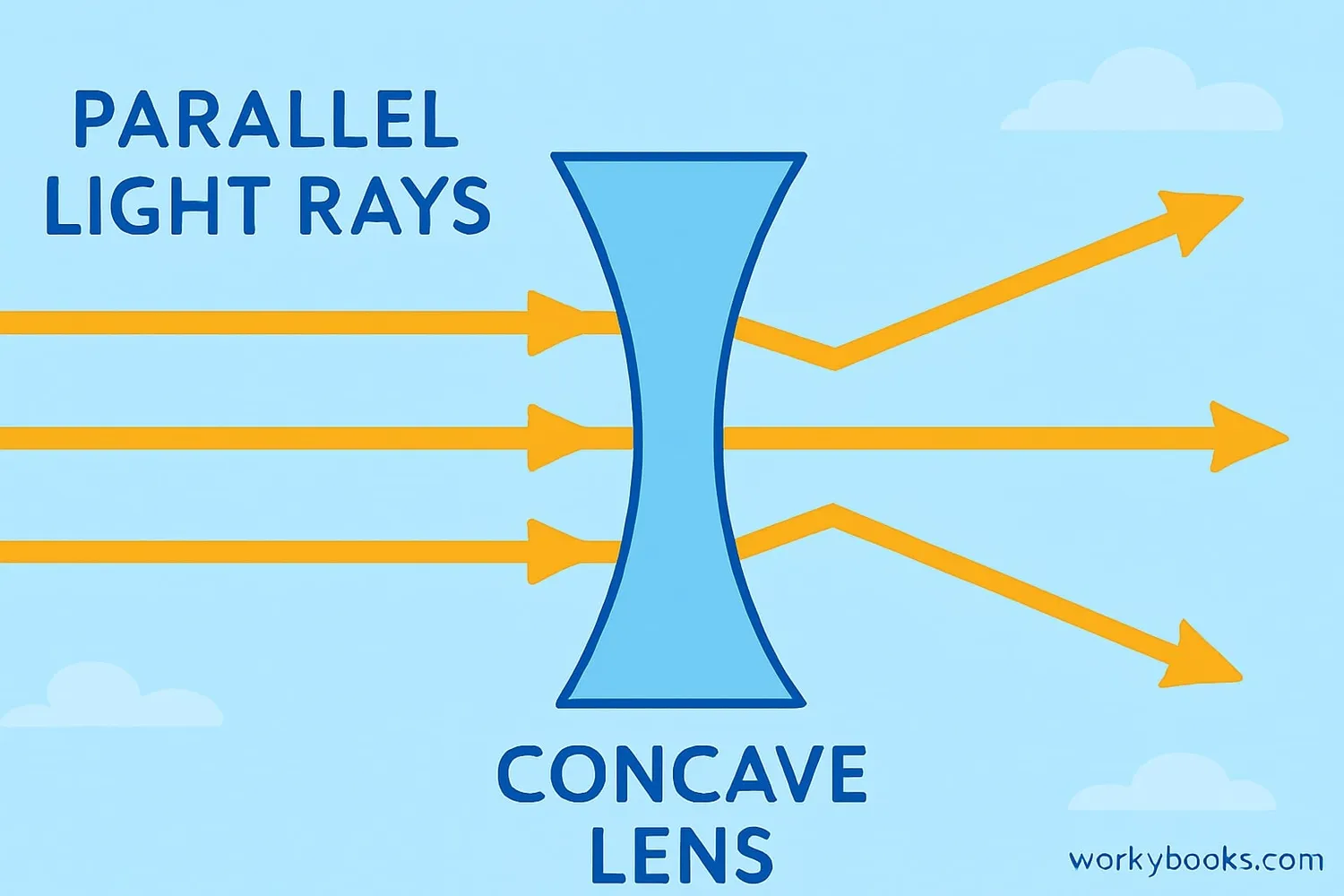
A concave lens is a curved piece of glass or plastic that is thinner in the center than at the edges. It's also called a diverging lens because it causes light rays to spread out (diverge) as they pass through.
Think of a concave lens like a cave that curves inward. When light passes through this special lens, it bends outward, making objects appear smaller and farther away than they actually are. Concave lenses are used in eyeglasses for people who are nearsighted, helping them see distant objects more clearly.
Lens Fact!
The word "concave" comes from the Latin words "con" (meaning together) and "cavus" (meaning hollow) - describing the inward curve!
How Concave Lenses Work
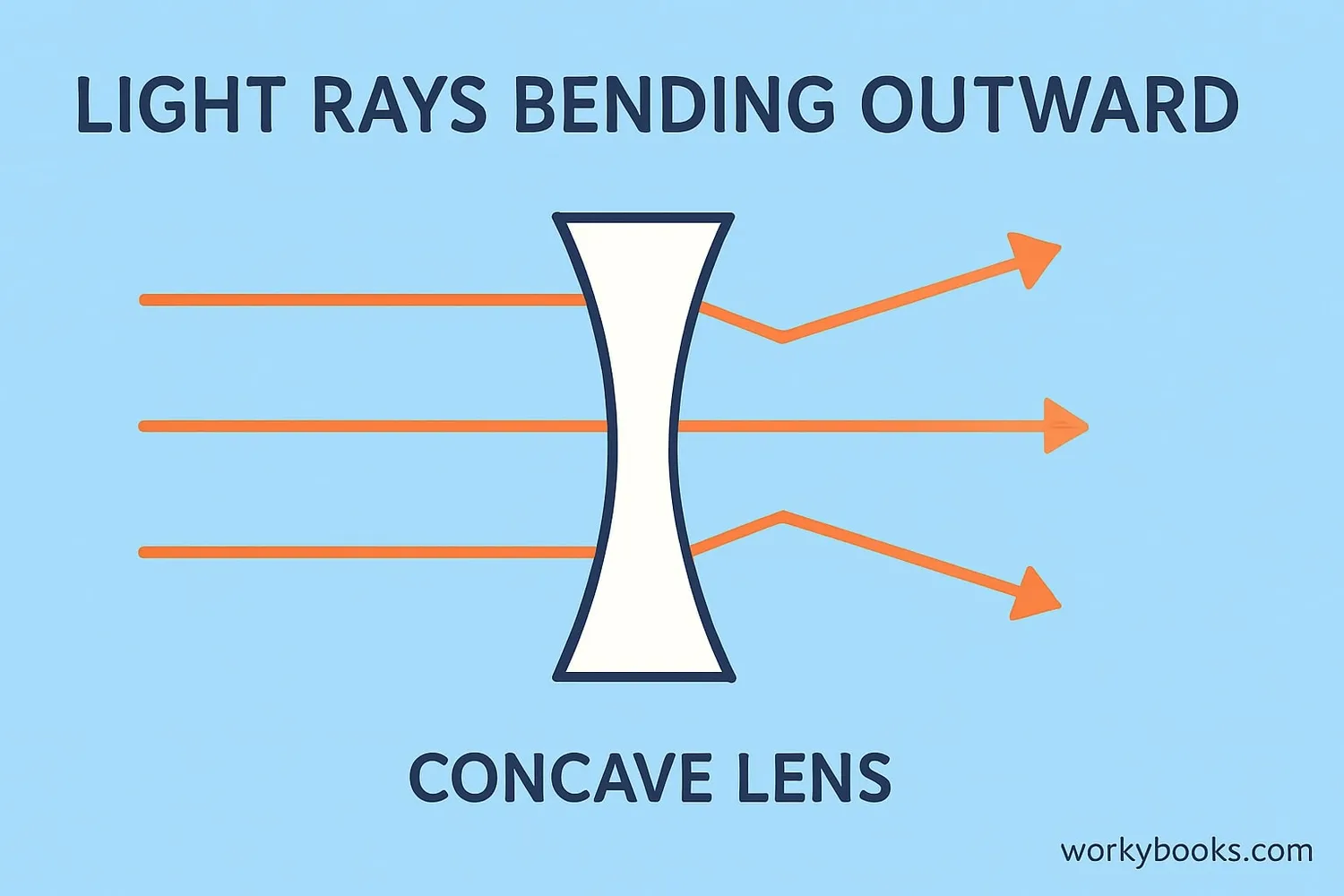
Concave lenses work by bending light rays through a process called refraction. When light enters the concave lens, it slows down and bends. Because the lens is thinner in the middle and thicker at the edges, the light rays bend outward (diverge) as they pass through.
This divergence of light rays means that when they reach your eyes, they appear to be coming from a point closer to you than the actual object. That's why objects viewed through a concave lens appear smaller and farther away.
Light Enters
Parallel light rays approach the concave lens
Refraction
Light slows and bends as it enters the glass
Divergence
Light rays spread outward (diverge)
Virtual Image
Your eye sees a smaller, upright image
Concave vs Convex Lenses
Understanding the difference between concave and convex lenses helps us see how they work in different situations:
Concave Lens
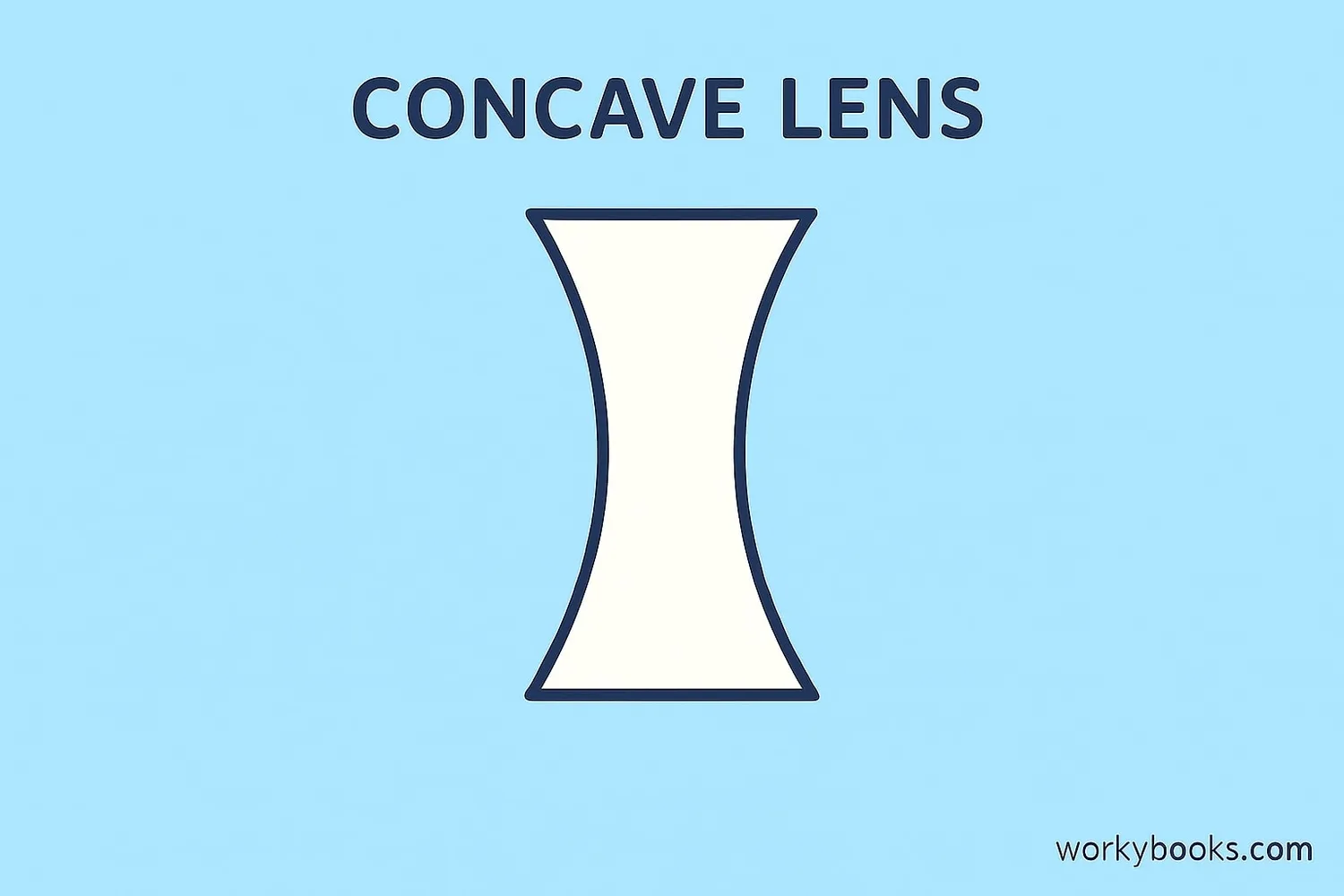
- Thinner in the center
- Diverges light rays
- Creates virtual images
- Makes objects appear smaller
- Used for nearsightedness
Convex Lens
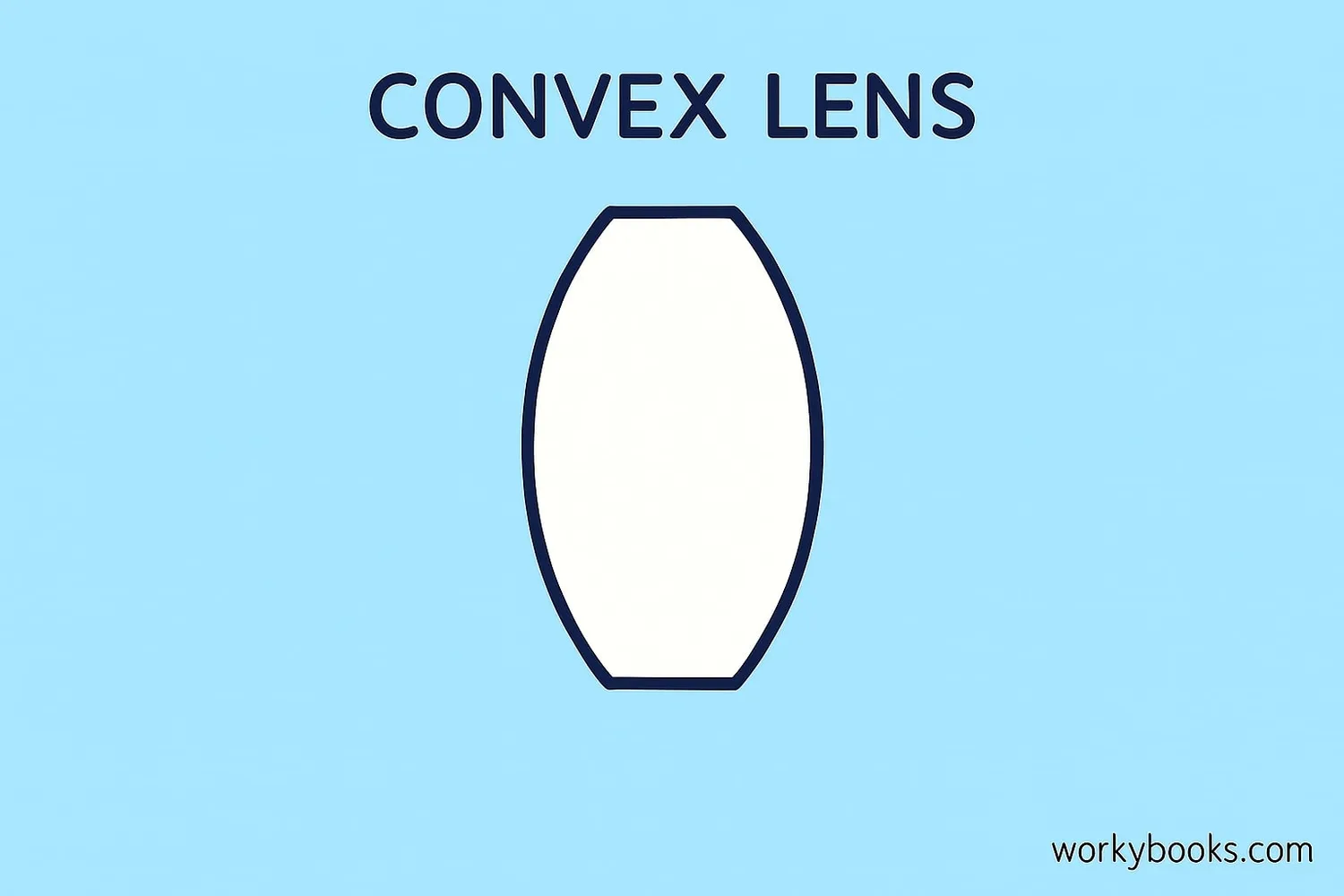
- Thicker in the center
- Converges light rays
- Can create real images
- Makes objects appear larger
- Used for farsightedness
Did You Know?
Many devices use both concave and convex lenses together! Telescopes and microscopes often combine different types of lenses to magnify images clearly.
Image Formation with Concave Lenses
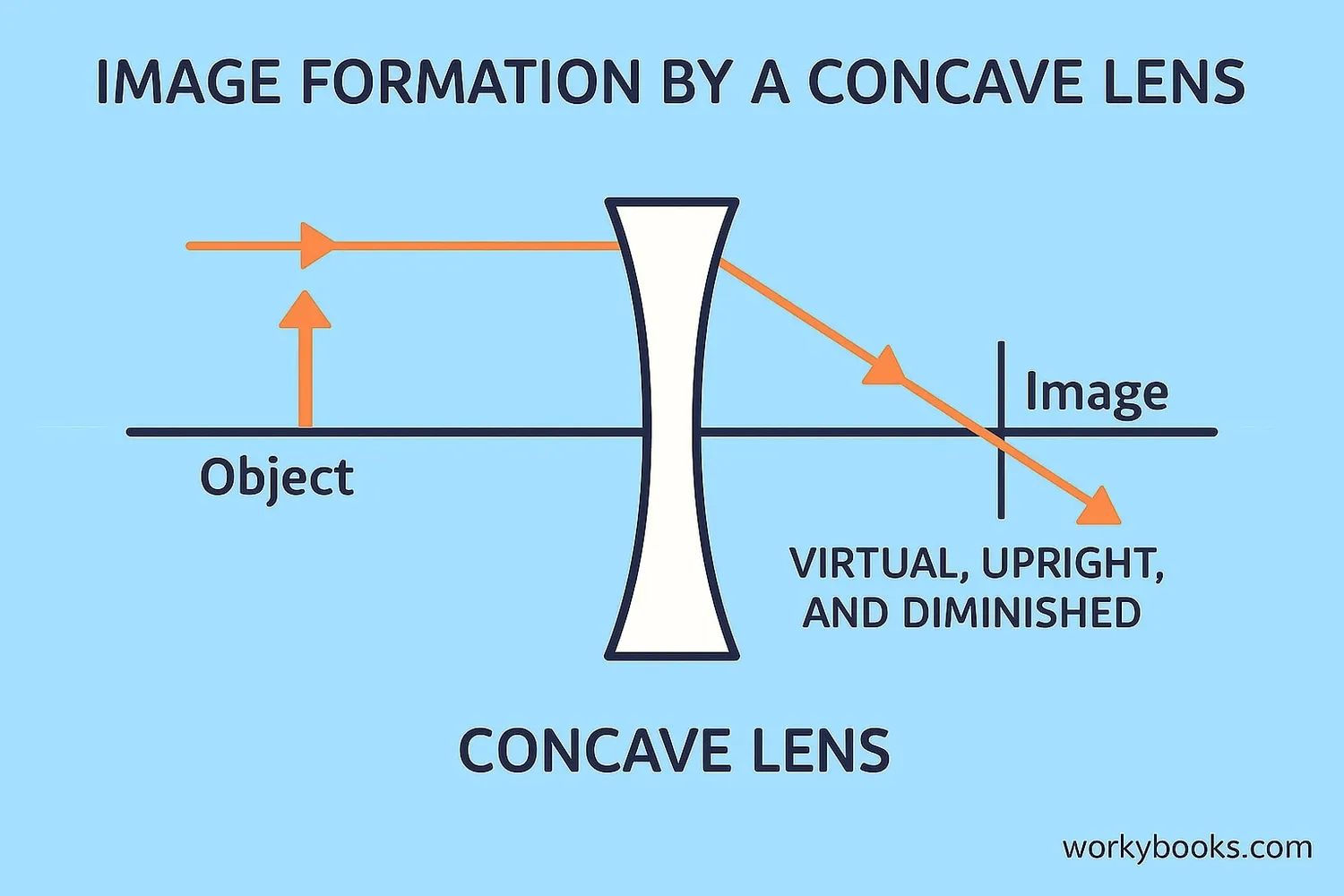
Concave lenses always form images that are:
• Virtual - Cannot be projected on a screen
• Upright - Same orientation as the object
• Diminished - Smaller than the actual object
Unlike convex lenses, concave lenses never form real images. The image appears between the lens and the object, and is always smaller than the object itself.
The Lens Formula
1/f = 1/v - 1/u
Where:
f = focal length (always negative for concave lenses)
v = image distance
u = object distance
Uses of Concave Lenses
• Correcting nearsightedness (myopia)
• Peepholes in doors
• Laser beam expanders
• Some types of telescopes
• Camera lenses to reduce distortions
Concave Lens Quiz
Test your knowledge about concave lenses with this quiz! Answer all 5 questions to see how much you've learned.
Frequently Asked Questions
Here are answers to some common questions about concave lenses:
Fascinating Lens Trivia
Discover some amazing facts about lenses and optics!
Ancient Lenses
The oldest known lens is the Nimrud lens, dating back to 750 BC! This rock crystal lens was discovered in modern-day Iraq and may have been used as a magnifying glass or to start fires.
Natural Lenses
Your eyes contain natural convex lenses! The crystalline lens in your eye changes shape to focus on objects at different distances - a process called accommodation.
Space Telescopes
The Hubble Space Telescope uses both concave and convex mirrors (not lenses) to capture incredible images of distant galaxies. Its successor, the James Webb Telescope, uses a massive concave mirror 6.5 meters across!
Camera Lenses
A typical smartphone camera contains 4-7 lenses! Manufacturers combine concave and convex lens elements to reduce distortions and produce clear images from such small devices.


